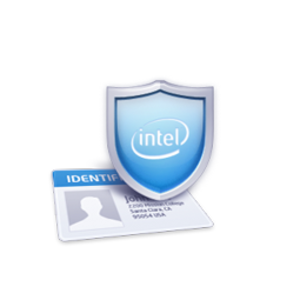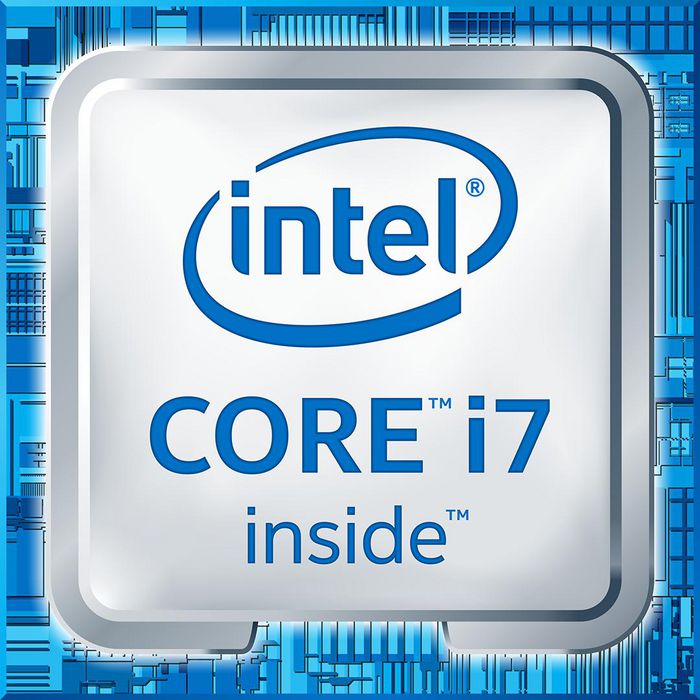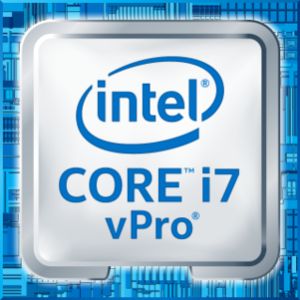- Inicio
- Piezas de servidor, PC e impresora
- Servidores y PC
- Componentes
- CPUs
- Intel Intel Core i7-9700 Processor (12MB Cache, up to 4.7 GHz) – BX80684I79700
Intel Intel Core i7-9700 Processor (12MB Cache, up to 4.7 GHz)
MPN BX80684I79700
Nivel de existencias
Intel® Optane™ Memory Supported
Intel® Optane™ memory is a revolutionary new class of non-volatile memory that sits in between system memory and storage to accelerate system performance and responsiveness. When combined with the Intel® Rapid Storage Technology Driver, it seamlessly manages multiple tiers of storage while presenting one virtual drive to the OS, ensuring that data frequently used resides on the fastest tier of storage. Intel® Optane™ memory requires specific hardware...
Especificaciones de BX80684I79700
Features
Configuración CPU (máx.)
1
Configuraciones PCI Express
1x16/1x8+2x4/2x8
Conjuntos de instrucciones compatibles
AVX 2.0/SSE4.1/SSE4.2
Ejecutar bit de desactivación
Yes
Escalabilidad
1S
Especificación de solución térmica
PCG 2015C
Estados inactivos
Yes
Máximo número de carriles PCI Express
16
Número de clasificación de control de exportaciones (ECCN)
5A992C
Opciones integradas disponibles
No
Revisión PCI Express CEM
3.0
Segmento de mercado
Desktop
Sistema automatizado de seguimiento de clasificación de mercancías (CCATS)
G077159
Tecnologías de monitorización térmica
Yes
Versión ranuras PCI Express
3.0
Graphics
Frecuencia base de la tarjeta gráfica integrada
350 MHz
Frecuencia de actualización de la tarjeta gráfica integrada a máxima resolución (eDP - Integrated Flat Panel)
60 Hz
Frecuencia de actualización de la tarjeta gráfica integrada a resolución máxima (DisplayPort)
60 Hz
Frecuencia de actualización de la tarjeta gráfica integrada a resolución máxima (HDMI)
24 Hz
Frecuencia dinámica de la tarjeta gráfica integrada (máx.)
1200 MHz
Máxima memoria integrada de la tarjeta gráfica
64 GB
Modelo de tarjeta gráfica discreta
Not available
Modelo de tarjeta gráfica integrada
Intel® UHD Graphics 630
Número de pantallas soportadas (gráficos integrados)
3
Resolución máxima de la tarjeta gráfica integrada (DisplayPort)
4096 x 2304 Pixels
Resolución máxima de la tarjeta gráfica integrada (eDP - Integrated Flat Panel)
4096 x 2304 Pixels
Resolución máxima de la tarjeta gráfica integrada (HDMI)
4096 x 2304 Pixels
Tarjeta gráfica discreta
No
Tarjeta gráfica integrada
Yes
Tarjeta gráfica integrada 4K compatible con
Yes
Versión DirectX de la tarjeta gráfica integrada
12.0
Versión OpenGL de tarjeta gráfica integrada
4.5
Logistics data
Código del Sistema Armonizado (SA)
85423119
Memory
Canales de memoria
Dual-channel
ECC
No
Máxima memoria interna soportada por el procesador
128 GB
Tipos de memoria compatibles con el procesador
DDR4-SDRAM
Velocidades de reloj de memoria compatibles con el procesador
2666 MHz
Operational conditions
Tjunction
100 °C
Other features
Máxima memoria interna
128 GB
Package dimensions
Depth (package,cm)
12 cm
Gross Weight (Package, kg)
0,27 kg
Height (package,cm)
7,2 cm
Width (package,cm)
10,7 cm
Processor
Ancho de banda de memoria soportado por el procesador (máx.)
41,6 GB/s
Caché del procesador
12 MB
Caja
Yes
Cógido del procesador
Coffee Lake
Componente para
PC
Enchufe procesador
LGA 1151 (Socket H4)
Fabricante procesador
Intel
Familia procesador
Intel® Core™ i7
Frecuencia base del procesador
3 GHz
Frecuencia de aumento del procesador
4,7 GHz
Generación
9th Generation
Generación procesador
9th gen Intel® Core™ i7
Litografía del procesador
14 nm
Modelo procesador
i7-9700
Modos de funcionamiento del procesador
64-bit
Núcleos procesador
8
Potencia de diseño térmico (TDP)
65 Watt
Procesador ARK ID
191792
Refrigerador incluido
Yes
Subprocesos procesador
8
Tipo de caché del procesador
Smart Cache
Velocidad bus del sistema
8 GT/s
Processor special features
Intel 64
Yes
Intel Software Guard Extensions (Intel SGX)
Yes
Intel Stable Image Platform Program (SIPP)
Yes
Intel TSX-NI
Yes
Intel VT-x with Extended Page Tables (EPT)
Yes
Intel® AES New Instructions (Intel® AES-NI)
Yes
Intel® Boot Guard
Yes
Intel® Clear Video HD Technology (Intel® CVT HD)
Yes
Intel® Hyper Threading Technology (Intel® HT Technology)
No
Intel® Identity Protection Technology (Intel® IPT)
Yes
Intel® Memory Protection Extensions (Intel® MPX)
Yes
Intel® Optane™ Memory Ready
Yes
Intel® OS Guard
Yes
Intel® Quick Sync Video Technology
Yes
Intel® Secure Key
Yes
Intel® Transactional Synchronization Extensions
Yes
Intel® Turbo Boost Technology 2.0 frequency
4,7 GHz
Intel® vPro™ Platform Eligibility
Yes
Tecnología de virtualización Intel (VT-x)
Yes
Tecnología Intel Clear Video
Yes
Tecnología Intel de virtualización para E/S dirigidas (VT-D)
Yes
Tecnología Intel SpeedStep mejorada
Yes
Tecnología Intel Trusted Execution
Yes
Tecnología Intel® InTru™ 3D
Yes
Tecnología Intel® Turbo Boost
2.0
Product dimensions
Net Weight (Product, kg)
0,254 kg
Technical details
Estado
Launched
Fecha de lanzamiento
Q2'19
ID del procesador
0x3E98
Máxima memoria
128 GB
Máxima memoria de la tarjeta gráfica
64 GB
Máxima resolución y frecuencia de actualización (DisplayPort)
4096 x 2304@60Hz
Tipo de producto
Processor
Tipos de memoria admitidos
DDR4-SDRAM
Velocidad del bus
8 GT/s
Vendor information
Brand Name
Warranty
1 Año/s
Weight & dimensions
Tamaño del paquete del procesador
37.5 x 37.5 mm
Descripción
Intel Core i7-9700 Processor (12MB Cache, up to 4.7 GHz)
Intel® Optane™ Memory Supported
Intel® Optane™ memory is a revolutionary new class of non-volatile memory that sits in between system memory and storage to accelerate system performance and responsiveness. When combined with the Intel® Rapid Storage Technology Driver, it seamlessly manages multiple tiers of storage while presenting one virtual drive to the OS, ensuring that data frequently used resides on the fastest tier of storage. Intel® Optane™ memory requires specific hardware and software configuration.
Intel® Turbo Boost Technology
Intel® Turbo Boost Technology dynamically increases the processor's frequency as needed by taking advantage of thermal and power headroom to give you a burst of speed when you need it, and increased energy efficiency when you don’t.
Intel® vPro™ Platform Eligibility
Intel® vPro™ Technology is a set of security and manageability capabilities built into the processor aimed at addressing four critical areas of IT security: 1) Threat management, including protection from rootkits, viruses, and malware 2) Identity and web site access point protection 3) Confidential personal and business data protection 4) Remote and local monitoring, remediation, and repair of PCs and workstations.
Intel® Virtualization Technology (VT-x)
Intel® Virtualization Technology (VT-x) allows one hardware platform to function as multiple “virtual” platforms. It offers improved manageability by limiting downtime and maintaining productivity by isolating computing activities into separate partitions.
Intel® Virtualization Technology for Directed I/O (VT-d)
Intel® Virtualization Technology for Directed I/O (VT-d) continues from the existing support for IA-32 (VT-x) and Itanium® processor (VT-i) virtualization adding new support for I/O-device virtualization. Intel VT-d can help end users improve security and reliability of the systems and also improve performance of I/O devices in virtualized environments.
Intel® VT-x with Extended Page Tables (EPT)
Intel® VT-x with Extended Page Tables (EPT), also known as Second Level Address Translation (SLAT), provides acceleration for memory intensive virtualized applications. Extended Page Tables in Intel® Virtualization Technology platforms reduces the memory and power overhead costs and increases battery life through hardware optimization of page table management.
Intel® TSX-NI
Intel® Transactional Synchronization Extensions New Instructions (Intel® TSX-NI) are a set of instructions focused on multi-threaded performance scaling. This technology helps make parallel operations more efficient via improved control of locks in software.
Intel® 64
Intel® 64 architecture delivers 64-bit computing on server, workstation, desktop and mobile platforms when combined with supporting software.¹ Intel 64 architecture improves performance by allowing systems to address more than 4 GB of both virtual and physical memory.
Instruction Set
An instruction set refers to the basic set of commands and instructions that a microprocessor understands and can carry out. The value shown represents which Intel’s instruction set this processor is compatible with.
Instruction Set Extensions
Instruction Set Extensions are additional instructions which can increase performance when the same operations are performed on multiple data objects. These can include SSE (Streaming SIMD Extensions) and AVX (Advanced Vector Extensions).
Idle States
Idle States (C-states) are used to save power when the processor is idle. C0 is the operational state, meaning that the CPU is doing useful work. C1 is the first idle state, C2 the second, and so on, where more power saving actions are taken for numerically higher C-states.
Enhanced Intel SpeedStep® Technology
Enhanced Intel SpeedStep® Technology is an advanced means of enabling high performance while meeting the power-conservation needs of mobile systems. Conventional Intel SpeedStep® Technology switches both voltage and frequency in tandem between high and low levels in response to processor load. Enhanced Intel SpeedStep® Technology builds upon that architecture using design strategies such as Separation between Voltage and Frequency Changes, and Clock Partitioning and Recovery.
Thermal Monitoring Technologies
Thermal Monitoring Technologies protect the processor package and the system from thermal failure through several thermal management features. An on-die Digital Thermal Sensor (DTS) detects the core's temperature, and the thermal management features reduce package power consumption and thereby temperature when required in order to remain within normal operating limits.
Intel® Identity Protection Technology
Intel® Identity Protection Technology is a built-in security token technology that helps provide a simple, tamper-resistant method for protecting access to your online customer and business data from threats and fraud. Intel® IPT provides a hardware-based proof of a unique user’s PC to websites, financial institutions, and network services; providing verification that it is not malware attempting to login. Intel® IPT can be a key component in two-factor authentication solutions to protect your information at websites and business log-ins.
Intel® Stable Image Platform Program (SIPP)
Intel® Stable Image Platform Program (Intel® SIPP) can help your company identify and deploy standardized, stable image PC platforms for at least 15 months.
Razones para comprar

Intel® Identity Protection Technology (Intel® IPT)
Protect Your Identity and Business
Intel® Identity Protection Technology (Intel® IPT) protects enterprises from being penetrated by stolen credentials and online user account access with an added layer of hardware-based security and authentication as well as a multifactor authentication framework to manage different authentication methods.

Intel® Turbo Boost Technology
Higher Performance When You Need It Most
Intel® Turbo Boost Technology 2.01 accelerates processor and graphics performance by increasing the operating frequency when operating below specification limits. The maximum frequency varies depending on workload, hardware, software, and overall system configuration.

Intel® Quick Sync Video Technology
Create, Edit, and Share Video in a Flash
Intel® Quick Sync Video uses the dedicated media processing capabilities of Intel® Graphics Technology to make video encoding tasks—such as creating DVDs or Blu-ray discs, creating and editing 3D videos, converting 2D video files into 3D, and converting video for portable media players and social networking sites—faster and easier.
*Los datos de producto anteriores son proporcionados por Icecat. EET no se hace responsable de los errores en relación con esto.








